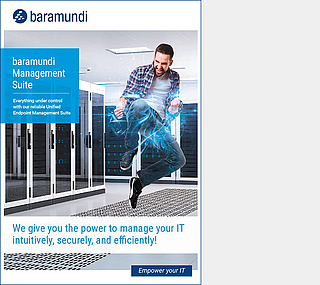End User Experience Management (EUEM)
End User Experience Management (EUEM) deals with all experiences that end users have with digital technologies in their working environment. The term is often used synonymously with Digital Employee Experience (DEX).
In an increasingly networked and digital working world, EUEM is becoming more and more important as it has a direct impact on employee productivity, satisfaction and efficiency. A positive end user experience leads to smoother work processes and contributes to an overall positive working atmosphere.
More information on the topic of End User Experience can be found on the baramundi blog.
Performance and stability of IT systems
By incorporating EUEM into their IT strategy, companies can implement proactive incident management for various technical incidents. This enables them to solve certain IT problems before they even become apparent to the end user and a support ticket is opened. In addition, IT admins use EUEM to keep an eye on performance, stability and connectivity metrics that end users are quietly annoyed about but do not report to IT.EUEM software increasingly in use
These metrics include application load and response times, service availability and IT system response times. Explicit feedback from end users is also collected as part of EUEM.Specialized software solutions are increasingly being used to help IT admins identify potential problems and even take remediation measures with the software.
Do you wish to try out the baramundi Management Suite?
Request now!
Product Brochure
Get detailed info about the Management Suite in our product brochure!
